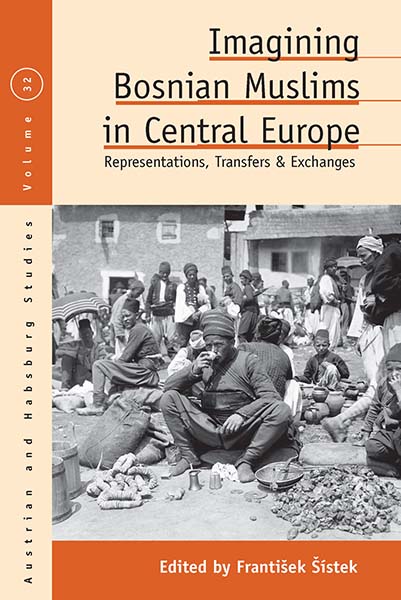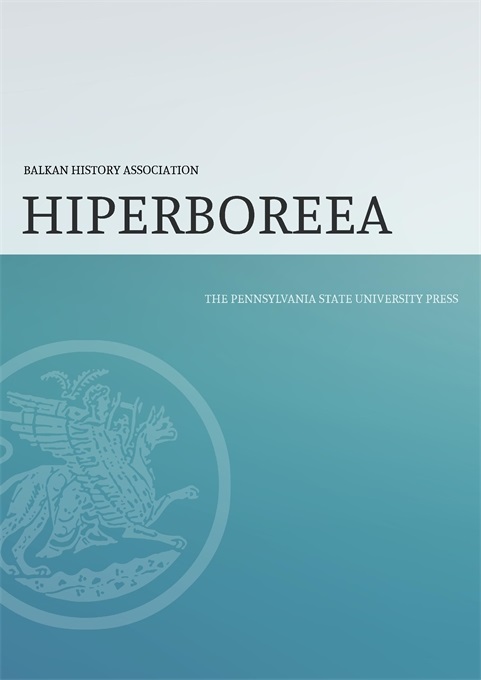
Imagining Bosnian Muslims in Central Europe. Representations, Transfers and Exchanges is a result of a project led by Fratišek Šístek and Peter Hladký. According to the editors, the purpose of the book is to point out “contacts, transfers and exchanges between people of Central Europe and Muslims of Bosnia and Herzegovina”, and also to monitor the development of the national identity of Bosnian Muslims. Therefore, the book can be divided into two parts. The first part follows past Central European relation towards Muslims. The second part deals with the period after the World War II, аnd it covers a wider range of topics from the official recognition of the national identity of Bosnian Muslims to contemporary perceptions of their identity in the diaspora.
Aside from the Introduction and Conclusion the book is comprised of thirteen chapters. Beginning with the introduction, “The Turkish Threat’ and Early Modern Central Europe: Czech Reflections,” authors Ladislav Hladký and Petr Stehlík explore the change in perception of the Turkish threat in the “Lands of the Bohemian Crown”. Their section consists of two thematic units. In the first unit, the authors examine the financial and military contribution to the “Lands of the Bohemian Crown” in the Habsburg defense against the Turks. While in the second part they point to the transformation of the “Turkish threat” in the period between the 16th and 18th centuries. The authors conclude that over time, the Czech struggle with the Turks was regarded in the collective memory as a relic of some ancient heroic past.
The next chapter, “The Muslims of Bosnia and Herzegovina between Millet and Nation,” by Božidar Jezernik, follows the development of national identity among Bosnian Muslims through the different periods and reigns, from the Ottoman era through the Austro-Hungary to the Kingdom of Yugoslavia. The author points out the overlap of religious and national identity and also discusses the pressure on Muslims to accept “Serbian or Croatian national identity.” Jezernik also made a mistake stating that 1453 was the year of publication for the Ahdname to the Franciscans, instead 1463 (43 pp).
In the third chapter, “Ambivalent Perceptions: Austria-Hungary, Bosnian Muslims and the Occupation Campaign in Bosnia and Herzegovina (1878)” Martin Gabriel writes about the perceptions of public opinion in Austro-Hungary expressed through newspapers, but also in memoirs from the participants in the occupation. For example, as the Muslims were presented as “savages” (pp. 68), it was a response to the armed resistance to the occupation, but also had a foothold in the collective memory of the Austro-Ottoman wars of earlier times.
Clemens Ruthner’s chapter, “Sleeping Beauty’s Awakening: Habsburg Colonialism in Bosnia and Herzegovina, 1878-1918,” considers the extent to which the colonial paradigm is applicable to the example of Bosnia and Herzegovina. The author’s dilemma is how to evaluate 40 years of Austro-Hungarian administrations, whether “in terms of civilizational mission or within the paradigm of European colonialism”? (pp. 80). He concludes that the Austro-Hungarian administration in Bosnia and Herzegovina can be characterized as “Quasi colonialism” (pp. 86).
In his chapter, “The Portrayal of Muslims in the Austro-Hungarians Primary School Textbooks for Bosnia and Herzegovina,” Oliver Pejić emphasizes Interconfessional education as an important lever of Austro-Hungary’s self-proclaimed civilizing mission. Accorded to the administration, textbooks were supposed to play a double role, in the creation of the collective identity of Bosnian Muslims, and also in the emergence of loyal subjects to the monarchy.
In the following chapter, “Towards Secularity: Autonomy and Modernization of Bosnian Islamic Institutions under Austro-Hungarian Administration,” Zora Hesová focuses on the formation of autonomous Bosnian Islamic institutions whose foundations were laid during the Austro-Hungarian administration and whose heritage is still visible in the modern era. The formation of an Islamic religious community independent of Istanbul was a necessity in political terms as well. She emphasizes the importance of the 1909 Statute, concluding that Austro-Hungary “had a direct” and “formative and long-lasting influence on the character of Bosnian Islamic institutions and practices” (pp. 118).
In “Under the Slavic Crescent: Representations of Bosnian Muslims in Czech Literature, Travelogues and Memoirs 1878-1918,”František Šístek, quotes authors who examined modernization in Bosnia and Herzegovina, as some even fantasized that Muslims would accept Catholicism – a “fantasy” that at the beginning of the 20th century gradually faded. The author concludes that in the period from the 1870s to 1918, there was a visible trend of positive representation and humanization of Muslims in Czech texts.
Author Charles Sabatos, in his chapter, “Divided Identities in the Bosnian Narratives of Vjenceslav Novak and Rebecca West,”compares Novak’s short story Maca (1881) and West’s travelogue in terms of different perceptions about Muslim identity. While Novak claims that Bosnian Muslims are not Turks and that they are Croatian brothers of Islamic faith, West claims that Bosnian Muslims are actually Serbs.
After World World II, Austro-nostalgia was revived. Bojan Baškar explores it in the example of Vera Stein Erlich as he discusses her private and public life, emphasizing her feelings of nostalgia for the Austro-Hungarian times. Regarding Muslims, Stein puts forward a bold theory, claiming that the culture and life of Bosnian Muslims was in fact a version of a larger oriental style and she placed the homeland in medieval Muslim Spain (pp. 162). In essence, the theory is incorrect, but according to Baškar, these are Stein’s attempts to connect Bosnia with her favorite area – Mexico (pp. 165).
Marija Mandić, in “The Serbian Proverb Poturica gori od Turčina (A Turk-Convert Is Worse Than a Turk): Stigmatizer and Figure of Speech,” relates the origin of the Proverb to the process of Islamization during the Ottoman Empire. According to the author, Proverb is used in the literal sense, but also in the figurative one. Its purpose is stigmatizing the legacy of the Ottoman Empire, but also the converts.
In the next chapter, “From Brothers to Others? Changing Images of Bosnian Muslims in (Post) -Yugoslav Slovenia,” Alenka Bartulović researches the perception about Bosnians and partly Bosnian Muslims in Slovenian society from the 1980s onward. She points out that Bosnians were first assumed as semi-rural and primitive people, and then Islamophobia and Balkanism emerged. Bartulović asserts that in the early 1990s Islam was set up as the most visible marker and the most obvious sign of the ethnic difference between Bosniaks and Slovenes.
Finally, the works of Aldina Čemernica and Merima Šehagićexplore the position of Bosnian Muslims in Germany. Čemernica deals with the issue of identity in the “Bosnian, European, Berliner” triangle among young Muslims of Bosnian descent (pp. 222). She claims that religion is a significant cohesion factor among Bosnian Muslims. On the same trail is Šehagić’s chapter about the attitude of Western society towards Bosnian Muslims. She concludes that they are understood as representatives of the European form of Islam, are considered white, and consequently they are accepted.
Ultimately, this book represents a significant venture in the study and development of the national identity of Bosnian Muslims, of the past relation between Central Europe and Austro-Hungary with Muslims of Bosnia and Herzegovina, as well as today’s Western perception toward them.
Stojanka Lužija, PhD, senior teaching assistant at the University of Banja Luka, Faculty of Philosophy, History Department.


